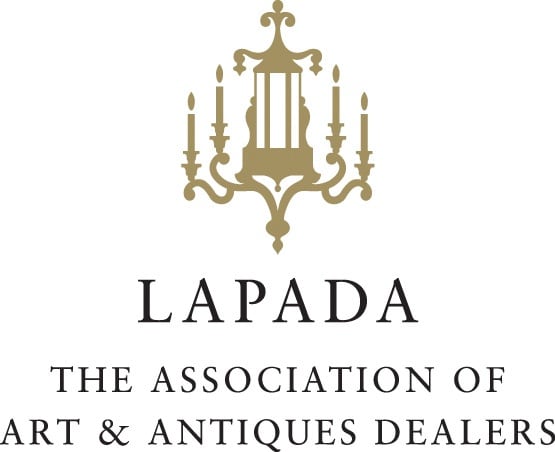John Vanderbank (1694-1739)
Provenance
Christie's London, British Pictures, 24 November, 1998, lot 16Literature
Ellis Waterhouse, Painting in Britain 1530-1790, 1957
The National Archives, The Shiffner Archives.
A portrait of Elizabeth Bellenden Ker, three-quarter length, wearing an ivory silk gown, the bodice trimmed with jewels, her hair dressed with pearls, standing on a classical terrace of a country estate, her outstretched hand about to pat the head of her spaniel seated beside her on a red velvet cushion on a plinth. Signed lower right 'Vanderbank Fecit'. Circa 1735. Stencil mark on the stretcher on the reverse. Oil on canvas in a carved wood and gesso frame.
The identity of the sitter had been lost for the past twenty-five years until recent research revealed her to be Elizabeth Bellenden Ker who was from a Scottish noble family, the eldest daughter of the Hon. James Bellenden Ker and granddaughter of John, the 2nd Lord Bellenden (c.1660-1707) and so directly related to the Dukes and Earls of Roxburghe. She was married firstly to John Jackson who worked for the East India Company and was appointed as the Governor of Bengal but who sadly died in 1748 before taking up his new position. They had two daughters, Mary (known as Molly) and Elizabeth. Her second husband was Edward Kelly of Dublin.
This charming composition follows in the tradition of celebrating beloved canine companions by featuring them in portraits alongside their owners. From the 17th century, the popularity of the spaniel had grown in England amongst the wealthy and upper classes and in art the dog was often used to symbolise the traits of loyalty and fidelity in marriage. As Elizabeth is seen here wearing a white gown, with rings on her fingers, this portrait is likely to have been commissioned to celebrate her recent engagement or marriage to her first husband John Jackson.
John Vanderbank (1694-1739) was born in London, the eldest son of John Vanderbank Senior who was the owner of the Soho Tapestry Manufactory. He was one of the first students at Godfrey Kneller's academy, later taken over by Sir James Thornhill. In 1720 Vanderbank opened his own academy with Louis Chéron, holding life classes with both male and female models, but in 1724 fled to France to avoid debtors prison. George Vertue ( Vertue, notebooks, 3.98) noted that 'he liv'd very extravagantly, keeping a chariot horses a mistress drinking and country house a purpose for her'. In Vertue's opinion, ( Vertue, notebooks, 5.98) after Kneller's death, Vanderbank could have been the leading portrait painter of his day had he not lived so extravagantly. Vanderbank's portraits are distinguished by his rich use of colour, particularly in the flesh tones. His sitters included Sir Isaac Newton (1725, RSA and Trinity College, Cambridge) and Queen Charlotte ( 1736, Goodwood House, Sussex) and he was also commissioned to illistrate 'Don Quixote' by publishers J and R Tonson in the original Spanish which appeared in 1738 with sixty-eight plates after Vanderbank.
Vanderbank died in London, December 1739, aged forty-five.



